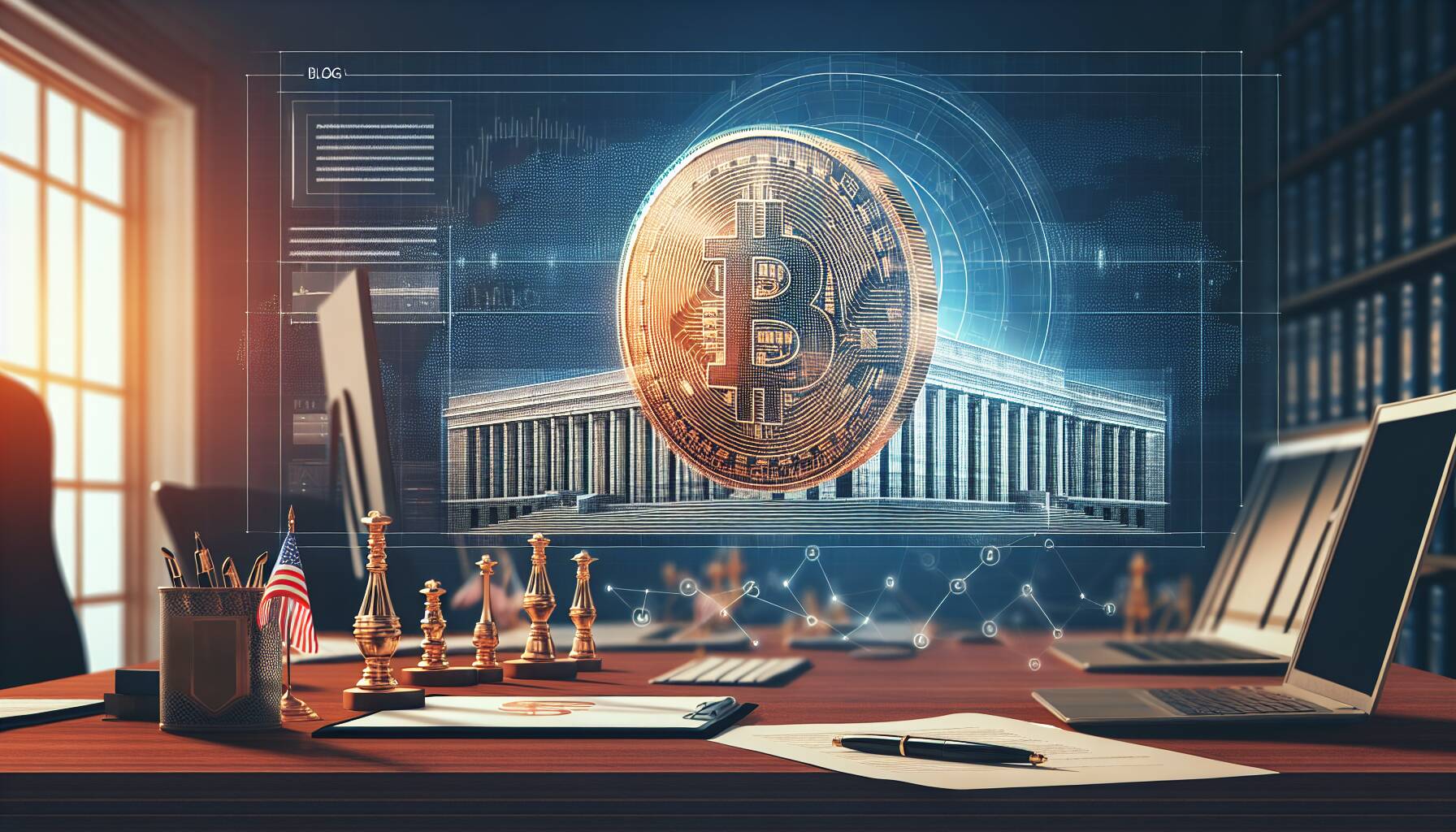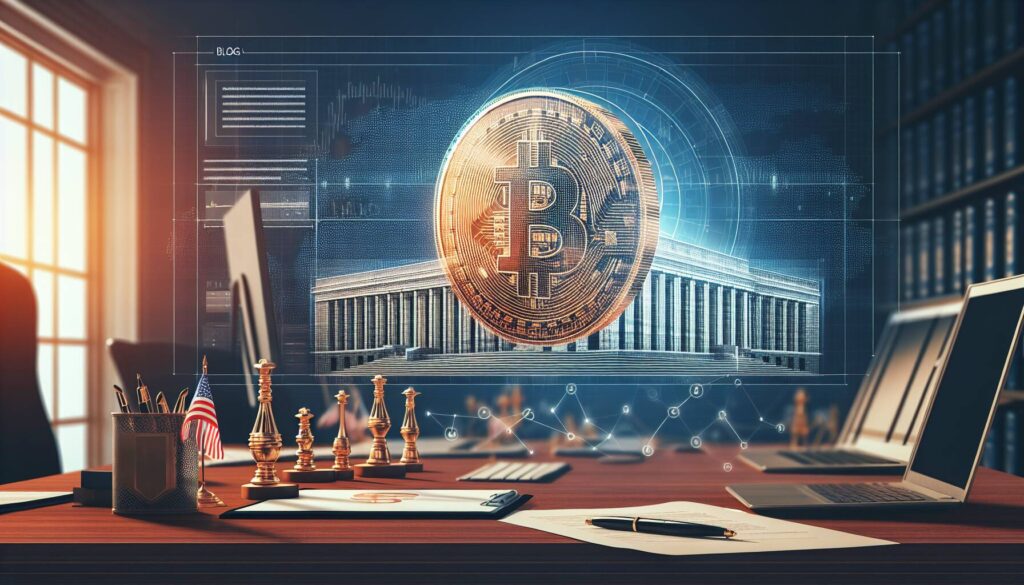In a surprising move that signals a new phase in the relationship between the U.S. government and cryptocurrency, President Donald Trump has ordered the establishment of a Bitcoin Strategic Reserve. This initiative is set to hold bitcoin and other digital assets seized by the government through civil or criminal forfeitures. David Sacks, appointed as Trump’s “crypto czar,” described the reserve as a “digital Fort Knox,” aimed at storing these assets for long-term value.
The executive order proposes that Bitcoin owned by the federal government, gained through forfeiture proceedings, will form the foundation of this reserve. Additionally, it encourages government officials to explore avenues for acquiring more bitcoin while ensuring these efforts do not burden American taxpayers. However, the order lacks specifics on the types of additional cryptocurrencies that might be included, leaving industry experts somewhat uncertain about its broader implications.
“Establishing a U.S. strategic Bitcoin reserve and digital asset stockpile is a huge moment for both crypto and American leadership on the global stage,” said Nathan McCauley, CEO of Anchorage Digital.
The announcement was timed with an industry summit attended by various leaders in the crypto space, where policy discussions were expected to take center stage. Initial market reactions were tepid, with Bitcoin seeing a nearly 5% drop shortly after the news broke, reflecting disappointment that the reserve comprises solely existing government-held tokens rather than new acquisitions. Other cryptocurrencies, including Ethereum and Ripple, also faced declines following the order.
Matt Hougan of Bitwise Asset Management noted that the establishment of the reserve may reduce the likelihood of a government ban on Bitcoin.
Some in the industry, however, criticized the initiative as lackluster. Charles Edwards of Capriole Investments referred to it as “the most underwhelming and disappointing outcome,” pointing out that without a clear strategy for acquiring new assets, the reserve might not achieve its intended impact.

Establishment of a Bitcoin Strategic Reserve
The recent directive by President Donald Trump has several implications for the cryptocurrency landscape and the economy. Here are the key points:
- Creation of a Bitcoin Strategic Reserve:
The Trump administration is directing the establishment of a Bitcoin Strategic Reserve utilizing assets seized by the government.
- Long-term Value Storage:
Bitcoin will be stored similarly to a “digital Fort Knox,” indicating an intention to hold these assets for future value.
- No New Purchases Initially:
The reserve will consist only of currently-owned Bitcoin from civil or criminal asset forfeitures, not involving fresh purchases.
- Government Assurance:
The Secretaries of Treasury and Commerce are tasked with finding budget-neutral ways to acquire additional Bitcoin.
- Impact on Other Cryptocurrencies:
Following the announcement, several cryptocurrencies, including Ethereum and Ripple, saw declines in value, reflecting market disappointment.
- Global Leadership Statement:
Industry leaders, like Nathan McCauley, view this move as a significant moment for the U.S. in establishing a leadership position in global cryptocurrency practices.
- Concerns Over the Strategy:
Critics argue that without a strategy for new purchases, the reserve lacks significant potential impact, describing it as “the most underwhelming outcome.”
“Establishing a U.S. strategic Bitcoin reserve and digital asset stockpile is a huge moment for both crypto and American leadership on the global stage.” – Nathan McCauley, CEO of Anchorage Digital
Trump’s Bitcoin Strategic Reserve: A Game Changer or Just Hot Air?
President Donald Trump’s recent directive to establish a Bitcoin Strategic Reserve has certainly stirred the pot in the crypto community. By leveraging seized assets to form what some have referred to as a “digital Fort Knox,” this move could pave the way for significant changes in how cryptocurrencies are perceived and handled by the U.S. government. However, the real competitive advantages will become apparent when examined alongside similar efforts in the crypto landscape.
Advantages: One of the primary benefits of the proposed Bitcoin reserve is its potential to legitimize cryptocurrency on an institutional level. Similar to how countries have acquired gold reserves, having a strategic Bitcoin reserve could bolster America’s position as a leader in the crypto space. This move could enhance trust among investors and signal to other nations that they should consider adopting similar strategies. Industry leaders like Nathan McCauley from Anchorage Digital highlight the importance of such initiatives in promoting both crypto adoption and U.S. influence worldwide.
Moreover, industry experts suggest that creating a Bitcoin reserve may reduce the likelihood of the government imposing drastic regulations or outright bans on digital assets, thus fostering a more stable environment for investment and innovation. On a global scale, this could inspire more nations to form their own reserves, potentially leading to a more unified and robust crypto economy.
Disadvantages: Nevertheless, there are significant hurdles that this initiative faces. The lack of immediate plans for acquiring additional Bitcoin raises concerns over whether this reserve will provide any real value, compared to what other countries like El Salvador have done with their Bitcoin strategies. Charles Edwards from Capriole Investments aptly describes this situation as a “pig in lipstick,” pointing out that without a strategy for new acquisitions, the entire plan feels lackluster at best.
Furthermore, the temporary drop in Bitcoin prices following the announcement indicates market skepticism. Bitcoin’s decline by nearly 5%, while other major cryptocurrencies followed suit, suggests that investors expected a more impactful strategy that involved fresh government purchases. The ambiguity surrounding the actual implementation of this executive order adds another layer of uncertainty to the mix.
Potential Beneficiaries and Challenges: The key beneficiaries of Trump’s directive are likely to be institutional investors and crypto companies, as this move could lead to heightened legitimacy and possibly more favorable regulations in the future. However, for smaller investors and enthusiasts who anticipated a more aggressive government buy-in, the results may feel disappointing. As market dynamics fluctuate, the crypto community, particularly investors, will need to navigate the shifting sands of policy and regulation to secure their investments.
In summary, while the formation of a Bitcoin Strategic Reserve presents opportunities for legitimizing cryptocurrencies on a national scale, it also raises pressing questions about execution and investor confidence in the emerging landscape.

















